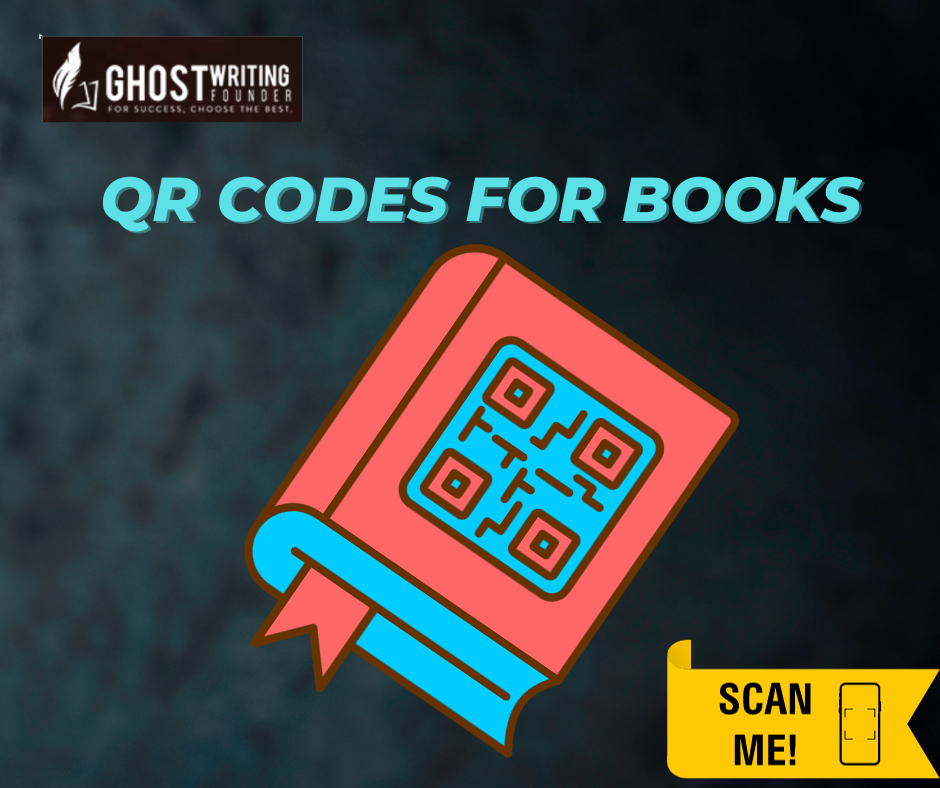
book writing Writing
QR codes have emerged as a powerful tool for transforming traditional textbooks into interactive learning options. By scanning these codes with a smartphone or tablet, students can unlock a world of supplementary materials, virtual field trips, and interactive exercises.
This innovative approach engages students in a dynamic learning journey and fosters personalized learning. Now, say goodbye to static textbooks and say hello to the exciting possibilities these codes bring to the world of education.
This guide will explore how these codes can breathe life into textbooks and create an amazing student experience.
What Are QR Codes?
A QR code, short for “Quick Response,” is a unique type of barcode that consists of a square filled with small black squares and dots. It functions as a hidden message that your smartphone or tablet can decipher. Think of it as a modern-day secret code that is easily accessible and straightforward to use.
They have gained popularity due to their versatility and convenience. By scanning a QR code using your device’s camera or a QR code reader app, you can instantly access a wide range of information or perform various actions.
These actions include visiting a website, downloading an app, paying, or adding contact details to your device.
How Do QR Codes Work?
Imagine you have a book with a QR code in it. You need a smartphone or tablet with a camera and a QR code reader app to make it work. Don’t worry; these apps are free and easy to find.
Here’s what you do:
- Open the QR code reader app on your device.
- Point the camera at the QR code in your book.
- Wait for your device to scan the code.
- Ta-da! The magic happens!
However, if you have an iPhone, you can simply open up the camera and point it towards the QR code. Hold the screen for a few minutes, and a link will pop up, directing you to the relevant page.
How can you bring textbooks to life with QR codes:
QR codes, those square patterns filled with small black squares and dots, are an innovative tool that can enhance the learning experience, particularly for textbooks. But you may be wondering how these codes can be used in textbooks. To solve that mystery for you, the Ghostwriting Founders have done some research so that you don’t have to.
In the following section, you will get to know how these codes are revolutionizing textbooks:
Accessible Supplementary Materials
Gone are the days when students had to lug around heavy bags filled with textbooks and supplementary materials. With a QR code, textbooks can now include easily accessible supplemental content.
By scanning a QR code associated with a specific chapter, students can access additional reading materials… For more on enhancing reading experiences, see Organize Your Reading List with Book Tabs, videos, interactive quizzes, and other educational resources. This enriches their understanding of the subject matter. It helps them delve deeper into the topics they are studying.
Virtual Field Trips
They can take students on virtual field trips, expanding their horizons beyond the confines of the classroom.
Imagine reading about ancient civilizations in history class and being able to scan a QR code that transports you to a virtual tour of the Pyramids of Giza or the Roman Colosseum.
These immersive experiences bring history to life, making learning more engaging and memorable.
Interactive Exercises and Assessments
They can transform traditional textbooks into interactive learning tools. Students can access these codes embedded within exercises or case studies, which direct them to interactive exercises or assessments.
This gamified approach makes learning more enjoyable and provides immediate feedback. This allows students to track their progress and identify areas for improvement.
Collaborative Learning Opportunities
They can facilitate collaboration among students. Embedding a QR code within textbook sections can lead students to discussion forums, where they can engage in online discussions about the topics they are studying.
These forums enable students to exchange ideas, ask questions, and learn from one another.
Real-World Applications
They can bridge the gap between theoretical concepts and real-world applications. Students can access real-life examples, case studies, or success stories by scanning a QR code associated with a specific topic or case study. This can demonstrate how their learning concepts are applied in the real world.
This practical connection helps students see the relevance and applicability of their studies.
Personalized Learning
Textbooks can be personalized with these codes to cater to individual learning needs. Students can access adaptive learning materials and resources by scanning a QR code at the beginning of a chapter. Learn about our personalized Book Writing Services for unique educational needs.
These tailored resources provide a personalized learning experience, ensuring that each student can learn at their own pace and in a way that suits them best.
Environmental Sustainability
They help reduce the environmental impact of traditional textbooks. By integrating these codes into textbooks, publishers can economize on paper and printing costs.
Students can access the content digitally, reducing the need for physical textbooks. This saves trees and lightens the load for students who no longer need to carry heavy backpacks filled with books.
3 Tips for a secure QR code Experience:
As much as a QR code is fantastic for learning, it’s essential to use them safely. Here are some tips to ensure a secure QR code experience:
Ask for Permission
Always ask your parents, teachers, or guardians for permission before using your device to scan these codes. It’s important to get their guidance and consent.
Verify the Source
Ensure the QR code is from a trusted source, like your school or a reputable educational website. Be cautious when scanning codes from unknown or unfamiliar places.
Keep Personal Information Safe
Don’t share personal information when using the codes; avoid entering sensitive data if prompted. Your safety online is essential.
Key Characteristics and Profound Details
| Feature | Description | Benefits |
|---|---|---|
| Accessible Supplementary Materials | QR codes in textbooks link to additional reading materials, videos, interactive quizzes, and resources. | Enhances understanding, allows deeper exploration of topics. |
| Virtual Field Trips | QR codes enable virtual tours of historical sites and other locations relevant to the study material. | Makes learning engaging, brings history and other subjects to life. |
| Interactive Exercises and Assessments | Embedded QR codes in exercises direct students to interactive learning activities and assessments. | Gamifies learning, provides immediate feedback, helps track progress. |
| Collaborative Learning Opportunities | QR codes lead to online forums for discussion, idea exchange, and collaborative learning. | Facilitates peer interaction, enhances learning through community engagement. |
| Real-World Applications | Scanning QR codes provides access to real-life case studies and examples relevant to the study material. | Bridges theory and practice, demonstrates real-world relevance of concepts. |
| Personalized Learning | QR codes offer adaptive learning materials tailored to individual needs and learning paces. | Supports personalized education, caters to diverse learning styles and speeds. |
| Environmental Sustainability | Reduces the need for physical textbooks, lowering paper and printing costs. | Eco-friendly, lightens students’ physical load, promotes digital learning. |
Conclusion
QR codes for books are a fantastic way to bring your textbooks to life and make learning more enjoyable. They provide an interactive, engaging, dynamic experience that helps students explore topics more deeply. It allows them to access supplementary materials, engage in collaborative learning, and connect theoretical concepts to real-world applications.
With these codes, textbooks become more than just printed words on a page. They become gateways to a world of knowledge and discovery.
So, the next time you open your textbook and see a mysterious square filled with tiny black squares and dots, don’t be scared – it’s your ticket to an exciting learning journey.









Leave a Reply